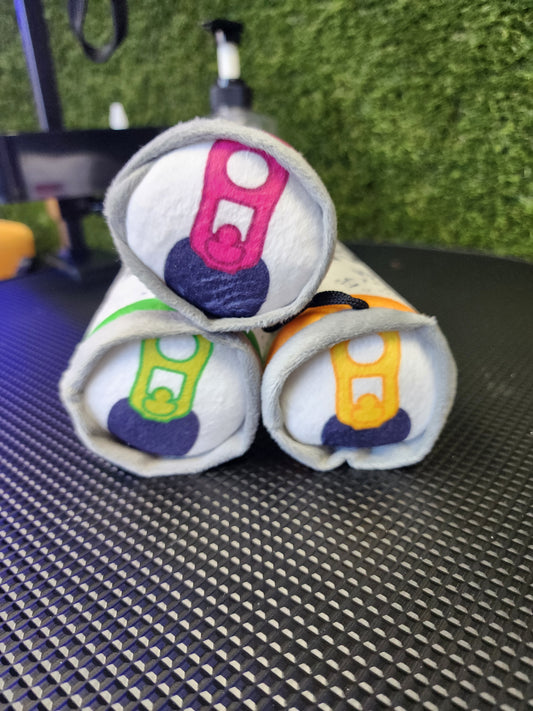Ever wondered what your dog is really trying to tell you? 🐾 While dogs may not speak our language, they communicate in many unique ways through their body language. Understanding these signals is key to ensuring your dog’s happiness and health. If you don’t understand your dog’s body language and how they communicate with you, you will not be able to interpret your dog’s body language which can lead to misunderstandings, missed signals, and potential behavioral issues. For instance, your dog might be signaling anxiety or discomfort, but without recognizing these signs, you might unintentionally reinforce negative behavior or fail to address your dog’s emotional needs which can lead to an unhealthy bond with your pet, or worse, you or the dog may get hurt. In this blog post, we’ll explore how to read your dog’s body language, from wagging tails to subtle ear movements, and how this knowledge can help you build a stronger, healthier bond with your furry friend.
The Basics of Dog Body Language
Understanding the Tail Wag
We all know that a wagging tail usually means a happy dog, but did you know that the speed, direction, and position of the tail can indicate different emotions? For example, a slow wag with the tail positioned low could signal that your dog is feeling uncertain about something, or someone. However, if your dog shows happy facial expressions and fast tail wagging, this can be a sign of excitement or arousal. Always consider what your pet does with other parts of its body to determine what your dog’s tail is really saying.
Ears: The Mood Indicators
Your dog’s ears are like little mood antennas that can help signal the mood they are in. According to an article shared by Doctors of Veterinary Medicine (DVM), perked-up ears can indicate that your dog is feeling threatened. Your dog may elevate its ears along with the head and its neck so that it can appear larger towards whatever may be threatening it. If you ever notice your dog’s ears are lower than usual it can signal fear, submission, or caution if your dog’s head and neck are also positioned lower. This is why understanding how to read your dog’s ears can give you valuable insight into their current state of mind.
How dogs use their eyes to communicate
By now you have learned about how dogs use their ears and tails to communicate. Dogs also use their eyes to communicate a range of emotions and needs. For example, if you ever notice your dog avoiding eye contact, it can be a sign of discomfort or submission. This means if your dog starts to feel fear, anxiety or any form of guilt they may avoid eye contact in order to avoid confrontation. However, if your pet has wide eyes, sometimes referred to as “whale eyes” where you’re able to see the whites on their eyes, this can be a sign that suggests they are feeling fear, stress or even aggression. This usually occurs when your dog feels threatened by someone or another dog. Whenever you see rapid eye movement on your dog this is a good indicator of your dog feeling excited about something. You may see this when they spot a squirrel, when they see you coming home from work, or with anything else that may get them excited. These are some ways that help you as a pet owner better understand how your dog is feeling and why they react the way that they do around certain people and other dogs, which can in return help you build a more positive relationship between you and your dog.
Recognizing Common Dog Body Language Signals
Now that you learned some basics of understanding dog body language let’s dive into some common dog body language signals that your dog may use to express its mood. This is very important because even though there are different breeds of dogs most dogs have a similar way of expressing how they feel. Being able to understand how your dog is feeling can help you as a pet owner react appropriately with your dog so you can build a stronger bond with them, and avoid unwanted situations from occurring. One thing to keep in mind is that just because your dog wags its tail doesn’t always mean it’s happy. You’ll have to pay attention to other parts of their body in order to determine what they are really communicating.
Relaxed and Happy
When your dog is relaxed and happy, you’ll notice their tail wagging in a wide sweeping motion that is even with their spine. Happy and relaxed dogs also have soft eyes with no wrinkles showing on their forehead. If your dog has pointed ears, their ears will point upward when they are feeling happy, and if your dog has floppy ears, they can hang slightly forward when feeling happy and relaxed. Finally, your dog can have their mouth closed without any signs of tension on their lips when they are feeling relaxed, but if your dog is happy and active at the same time their mouth could be slightly open as they pant. Their body will be free of tension, and they may even do a little “play bow” to invite you to join in on the fun. This is the perfect time to engage in play or cuddle time, as your dog is in a positive state of mind.
Fearful or Anxious
Your dog can also show signs of fear or anxiety by paying attention to their tail, ears, eyes, and mouth as well. If you notice your dog‘s ears are tucked behind their head, and at the same time, you see the whites on their wide eyes, these can be signs that your dog is feeling fearful. Your dog can also show you that they are feeling afraid if you see their tail tucked in against their belly and if their mouth is tightly closed. Being able to acknowledge these signs on your pet can help you as a pet owner provide comfort and reduce your dog’s stress before it escalates into more severe anxiety.
Aggressive or Threatening
A dog can become predatory or fearful and show aggressive body language. Usually when this occurs a dog becomes aggressive because they are about to react to whatever is stressing them. Their eyes will be focused on whatever is stressing them with a hard stare and wrinkles on their forehead, their mouth will have tension around it with their upper lip raised as they expose their teeth, and their ears and tail will be positioned differently depending on the reason behind their aggression. For example, if your dog is feeling fearful they can hold their ears back and against their head, and their tail can be low or tucked before acting aggressively but will raise their tail during the aggressive act. However, a confident and aggressive dog can have their ears pointing forward while holding their tails high above their body. If you notice these signs, it’s important to avoid confrontation and give your dog space to calm down. Understanding these signals can prevent potential conflicts and keep both you and your dog safe.
How to Respond to Your Dog’s Body Language
Positive Reinforcement for Good Behavior
Positive reinforcement is a form of dog training that can be used when your dog does things right. For example, if your dog exhibits relaxed and happy body language, you can reward them with treats, praise, or playtime. Positive reinforcement strengthens the bond between you and your dog and encourages them to repeat the behaviors that lead to those rewards. This not only improves your dog’s behavior but also enhances their overall well-being.
Providing Comfort During Anxiety
If your dog shows signs of fear or anxiety, it’s crucial to remain calm and provide them with a safe space. It has been scientifically proven that if you’re feeling anxious yourself as a pet owner, your dog can mimic these feelings from you as well. Therefore, being calm yourself is important if you want to help relieve your dog of their anxiety. Comfort your dog with soothing words, gentle petting, or anxiety-reducing products like wraps or calming pet beds or blankets. By addressing their anxiety early, you can help your dog feel more secure and prevent the escalation of stress.
Managing Aggression
When dealing with aggression, the key is to avoid confrontation and redirect your dog’s focus. The last thing you want to do is react with more aggression or punishment when your dog is being aggressive. Reacting with aggression to calm your aggressive dog is a short term solution, but it will not solve the emotional drive behind their aggressive behavior. Use commands they know, offer a favorite toy, or distract them with a treat. If aggression persists, it’s advisable to seek professional help from a dog trainer or behaviorist to address the underlying causes and ensure everyone’s safety.
Strengthening Your Bond With Your Dog Through Understanding
Building Trust
Trust is the foundation of any strong relationship, including the one with your dog. By consistently responding to your dog’s body language with empathy and understanding, you build a bond based on mutual respect and trust. Your dog will feel more secure and be more willing to follow your guidance, leading to a happier and healthier relationship.
Engaging in Activities Together
Spending quality time together through activities like walks, playtime, and training sessions allows you to observe and understand your dog’s unique signals and preferences. These moments are opportunities to strengthen your connection and make your dog feel valued and loved. The more you engage with your dog, the better you’ll be able to interpret their body language and meet their needs.
Conclusion
Understanding your dog’s body language is a powerful tool that can help you create a deeper bond and ensure your dog’s well-being. By paying attention to their signals and responding appropriately, you’ll build a stronger, healthier relationship with your furry friend. Ready to strengthen your bond with your dog? Start by paying closer attention to their body language and see how it transforms your relationship.
For more tips and education that can help strengthen your bond with your pet visit our blog post created specifically for pet owners like you. If you’d like to gift your pet with pet products that will make them happier and more stylish shop at our online store.
Sources:
- The Spruce Pets: Different Meanings of a Dog's Wagging Tail
- VCA Animal Hospitals: Canine Communication - Interpreting Dog Language
- I Heart Dogs: 9 Ways Dogs Communicate Through Their Eyes
- PetMD: How To Read a Dog's Body Language
- American Kennel Club: Positive Reinforcement Dog Training: The Science Behind Operant Conditioning
- PetMD: Aggression in Dogs
We’d love to hear from you! Share your thoughts or ask any questions in the comments below. How do you interpret your dog’s body language? Let’s chat!








